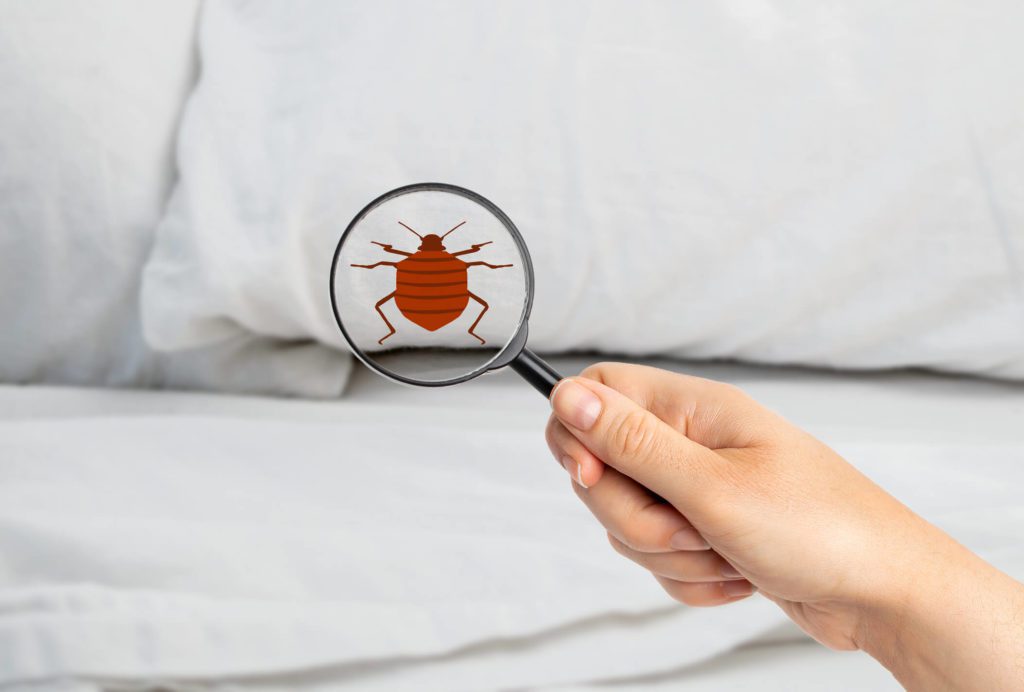Leading Kings Cincinnati Pest Control Services: Pest Control Expert Competence
Leading Kings Cincinnati Pest Control Services: Pest Control Expert Competence
Blog Article
Kinds Of Parasite Control: Which Technique Is Right for Your Invasion?
When confronted with a pest problem, the option of an appropriate method for parasite control is critical in successfully handling the situation. From chemical treatments to organic options, there exists a variety of techniques that can be employed to resolve different kinds of parasites. Each technique comes with its very own collection of factors to consider and benefits, making the decision-making procedure a nuanced one. Recognizing the nuances of each method and evaluating their compatibility with the details bug infestation available is vital for achieving lasting success in insect monitoring. By checking out the numerous kinds of pest control approaches offered, people can make informed choices customized to their unique situations, guaranteeing a more sustainable and reliable outcome in bug removal.
Chemical Parasite Control
Chemical pest control involves making use of artificial or normally derived chemicals to manage and eliminate pest populations effectively. This approach is typically used in agriculture, forestry, and property settings to battle a wide variety of insects, including rats, bugs, and weeds. Using chemical pesticides can supply quick and targeted options to pest problems, making it a popular choice for many people and organizations.
Among the key advantages of chemical pest control is its ability to promptly get rid of bugs, lowering the risk of damages to plants, building, and human health and wellness. By utilizing particular chemicals that target certain bugs, this method can effectively regulate problems while decreasing damage to valuable organisms and the environment when applied properly.
Nevertheless, the use of chemical bug control also elevates worries about potential negative impacts on non-target species, water resources, and human health. It is crucial to follow safety and security guidelines, use chemicals properly, and consider alternate bug control approaches to minimize these threats and guarantee sustainable parasite administration techniques.
Organic Pest Control
Organic parasite control, additionally recognized as biocontrol, utilizes living organisms to take care of and lower bug populations normally. By making use of the bug's natural predators or pathogens, biological pest control offers a sustainable and environmentally pleasant remedy to pest management.

Mechanical Pest Control
Using physical and manual techniques to manage bug populations, mechanical bug control provides an alternative technique that does not rely upon the usage of living organisms or artificial chemicals. This method includes the usage of obstacles, traps, or various other devices to literally deter or get rid of pests. By obstructing pest entrance factors or establishing traps to capture them, mechanical insect control can efficiently reduce infestations without presenting chemicals right into the environment.
One typical instance of mechanical bug control is making use of mesh screens on doors and home windows to prevent bugs from entering buildings. This basic yet effective technique acts as a physical barrier, keeping parasites out while enabling appropriate air flow. In addition, tools like mousetraps, fly swatters, and ultrasonic repellents fall under the mechanical insect control group.
While mechanical insect control methods can be labor-intensive and require routine surveillance and upkeep, they provide a lasting and eco-friendly solution for handling bug invasions. By incorporating various mechanical strategies, homeowner can create an extensive bug control method that lessens dependence on chemical pesticides.
Physical Insect Control

Some common physical bug control methods consist of the usage of obstacles such as displays or internet to avoid parasite entry, catches to catch and get rid of pests, and hand-picking to physically get rid of pests from plants or structures. Additionally, strategies like heat treatments can be utilized to regulate pests like bed insects by increasing the temperature to degrees that are dangerous to the insects.
Physical insect control is specifically helpful in integrated pest administration (IPM) approaches, where multiple insect control techniques are incorporated for reliable pest management while reducing the usage of chemicals. By making use of physical parasite control techniques, individuals can successfully deal with insect infestations with minimal environmental impact.
Integrated Bug Monitoring
When carrying out physical parasite control approaches as component of parasite monitoring strategies, Integrated Pest Monitoring (IPM) arises as a comprehensive method that leverages various techniques to effectively control pest populations. IPM focuses on long-lasting prevention of pests through a mix of organic, social, look these up physical, and chemical tools customized to details bug problems. By integrating multiple control tactics, IPM intends to decrease the dangers related to insects while also reducing dependence on chemical options.
One secret facet of IPM is the focus on monitoring and examining pest populations to determine one of the most proper control techniques. This positive method permits very early intervention and targeted strategies, leading to extra efficient pest monitoring. Furthermore, IPM advertises eco-friendly techniques by prioritizing non-chemical control approaches and only using chemicals as a last resource.
Final Thought

By utilizing the insect's natural killers or virus, biological parasite control supplies a eco pleasant and sustainable service to pest management. - Kings Bed bug exterminator Cincinnati
Using hand-operated and physical techniques to manage pest populations, mechanical pest control uses an alternate approach that does not count on the use of living microorganisms or artificial chemicals.An effective method to handling bug populaces without relying on chemical or organic methods entails the use of physical parasite control methods.When executing physical parasite control techniques as component of insect monitoring methods, Integrated Pest Monitoring (IPM) emerges as a comprehensive technique that leverages various methods to properly control pest populaces. Chemical parasite control entails the use of chemicals, organic insect control uses natural predators, Read Full Report mechanical bug control involves physical obstacles, physical parasite control includes trapping or eliminating parasites, and integrated bug monitoring combines multiple techniques for an all natural approach to pest control.
Report this page